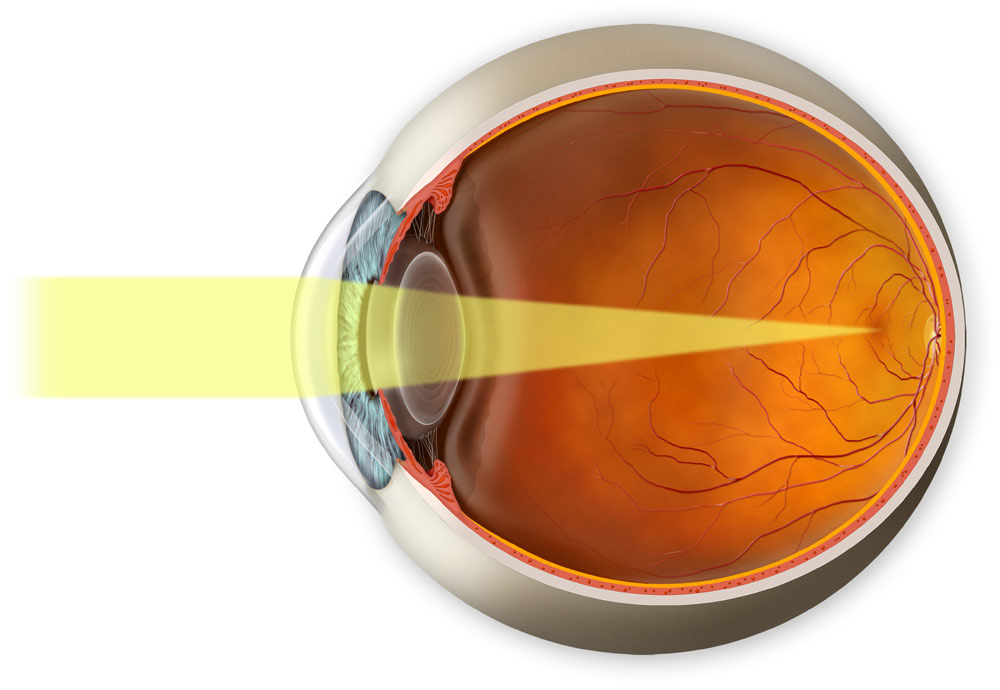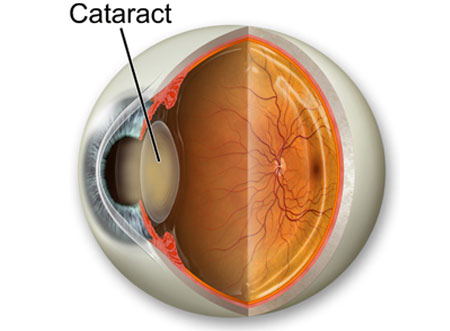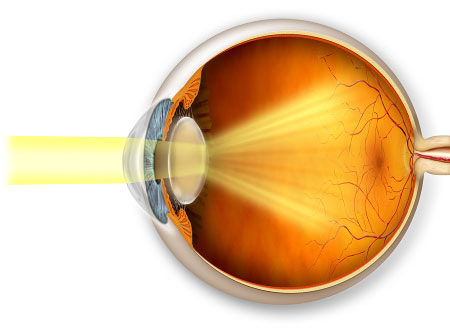
Cataracts, Aging Eyes & Vision
As you age, it is important to learn about cataracts because they are the leading cause of vision loss among people over 55, or seniors. In the United States, the incidence of age related cataract is approximately 42% in those aged 52 to 64, 60% in those aged 65 to 74 and 91% in those aged 75 to 85. In order for you to have clear vision light must be able to pass through the optical structures of your eyes and focus properly on the retina.

The two structures responsible for refracting, or bending light are the cornea, which is the outermost clear curved “lens” that is visible when looking at your eye from a side view and the crystalline lens, which is located behind the colored part of the eye-the iris. Both the cornea and the crystalline lens need to be perfectly clear in order for you to have good vision. If you are in good health and have not had chronic eye infections, inflammation or had any trauma to your eyes, the cornea is likely to maintain its clarity throughout your life unlike the crystalline lens which undergoes a number of changes that progress as we age. These aging changes can affect your vision. Even if you have had “good eyes” and “normal vision” all your life, your vision is likely to begin to change in a number of ways as you progress from your 40’s, to your 50’s and then your 60’s and beyond.
The two most common changes that occur in the crystalline lens are:
Presbyopia is an aging phenomenon that occurs as the crystalline lens loses its flexibility with increasing age. Presbyopia begins at around age 40 and progresses until about age 65. The “normal” flexibility of the crystalline lens allows it to change its shape and alter its curvature in order to rapidly focus your vision at various distances-from far, to near, to arm's length, to far or near again. The focusing capacity of the crystalline lens gives you the ability to see things at all distances-a process called “accommodation." About the time that we enter our 40’s, the crystalline lens begins to stiffen. The stiffening of the crystalline lens makes it progressively more difficult to change focus or accommodate making it more and more difficult to see close up. Initially, this reduces our ability to see objects clearly at arm’s length. As presbyopia progresses it becomes more difficult to see reading material or objects close up. Presbyopia affects everyone including those who have cataracts. As presbyopia begins, people who have never worn eyeglasses find that they need reading glasses or bifocals in order to read and see up close. People who already wear glasses may need bifocals or trifocals in order to see up close and have comfortable near vision.
The crystalline lens is usually soft, flexible and “crystal” clear so that it has excellent transparency and optical clarity. As we progress through our 50’s and 60’s, the normally “crystal” clear lens may gradually become yellow and cloudy.
When this occurs, you may initially experience a mild blurring of your vision and feel that you might need a change of eyeglasses. You may notice that it is not as easy to see well and comfortably in dim illumination, such as for night driving. You may notice that colors look faded. The cloudiness may also create glare, haloes, light sensitivity and a continuing decrease in your vision. If the crystalline lens becomes too cloudy it may cause a significant decrease in both your day and night vision.


These are the visual symptoms that are common for those patients whose crystalline lens has clouded and formed a cataract. It is important to note that cataracts are even more common if we have had certain health problems such as diabetes or taken certain medications such as cortisone for asthma or other types of inflammatory conditions. If you are experiencing vision changes like these, it is important to schedule a comprehensive eye examination and cataract evaluation.
Advances in cataract surgery and intraocular lens implantation (IOL) allow Cataract Surgeon Scott Buck, M.D. to remove your cataract, correct near vision and treat presbyopia all as part of your cataract surgery. Presbyopia correcting lens implants that correct both distance and near vision can help patients achieve clear distance vision as well restore their normal range of vision without relying on eyeglasses, bifocals or reading glasses.
For seniors concerned about aging eye problems and other patients concerned about their risk of developing cataracts it is helpful to have some information on cataract risk factors. The more common cataract risk factors that most people are familiar with include:
Aging Eyes and Cataracts Don’t Have to Slow You Down
Indiana seniors concerned about the effects of aging eyes and vision can avoid having to slow down or restrict their lifestyle and activities by learning about Cataracts and how to deal with having a Cataract. By understanding the symptoms of cataracts, the benefits that cataract surgery and lens implants can have on vision, daily living, maintaining mental alertness and the safety and comfort of just moving around, seniors and those with aging eyes can overcome the potential limitations cataracts can present.